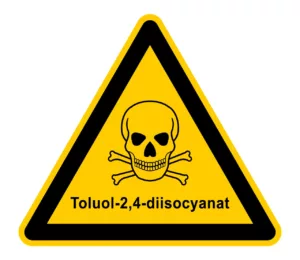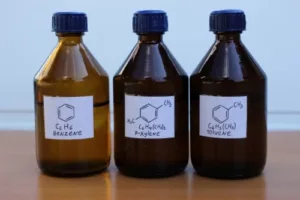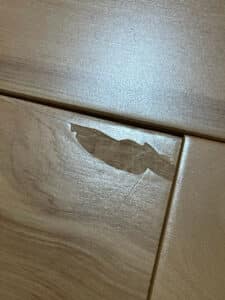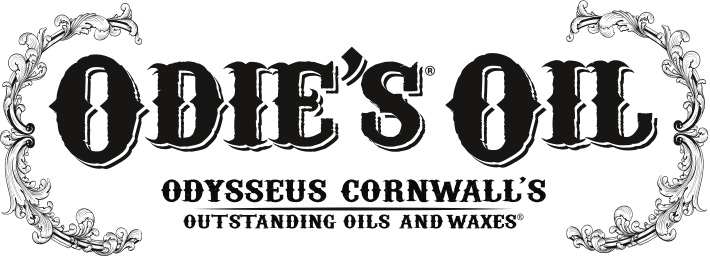As promised, this week we continue with Part 3 of our blog, “The Lies of Big Chemical” with a focus on perhaps the largest finish products category – polyurethanes. It may come as a surprise to many that the polyurethanes category includes many of the top oil/wax finish brands (whose names we will not mention). That’s right, many of the oil/wax finishes on the market are in essence polyurethanes or pseudo-oil/wax finishes, especially those that are pre-catalyzed or include a part two catalyst.
Every few years, the chemical industry comes out with a new-fangled product, typically promoted as their best, most durable, faster drying, or whatever marketing gimmick they can come up with. But the bottom line is that, for the most part, they are all using the same basic chemistry with various modifications. The key wood finish ingredient tends to be a polymer-based product known as polyurethane. So, let’s take a look at just what is a polyurethane and what ingredients make it so. First and foremost, it is a polymer plastic made from oils and isocyanate. It can come in solid form, foam form, or liquid form which dries, cures, and hardens with the addition of chemical additives.
Much like the pharmaceutical industry, the chemical industry is an outgrowth of the petroleum industry.
In the finishing products sector, we are talking about the liquid form of polyurethane. Apart from one patented product, polyurethanes are all made with a toxin called isocyanate, and there are various types of those each with similar hazards but some more dangerous than others.

Since isocyanates are an essential ingredient in nearly all polyurethane products, it has become an approximately one-hundred billion dollar per year industry.
Due to its general toxicity, in 2016, a 90 billion dollar lawsuit was brought against the manufacturers of isocyanates because of the deception and obfuscation of its dangers from the public.
The lawsuit, brought by a company called Hybrid and the US EPA against the defendants, was recently thrown out by a court because of standing and not due to the merits of the toxicity claims. However, it seems there may be numerous health-damage suits related to similar “False Claims Act” violations on behalf of consumers and those directly harmed by the various isocyanates: The Lyon firm; and DeMarco, Negle & Lane, LLP, for example.

For some individuals, permanent injury or death can occur with even small exposure to isocyanates according to scientists, health officials, and legal experts.
When processing petroleum, numerous byproducts are extracted and distilled from the original natural material. They are often further processed to yield various fractions of the byproducts, and each is often found in various grades, i.e., levels of purity. Mineral oil, for example, can be found in several industrial grades containing benzene and other toxins, as well as a pure food grade that is completely inert and safe. In recent news, we see warnings and suits brought due to benzene content in popular sunscreens and other consumer products. The reason is not that benzene itself was particularly added but because it may have been present in the ingredients used, such as low-grade mineral oil — so very typical of big chemical — to cut corners and save money instead of using pure ingredients such as USP grade mineral oil. Another potential vector could be the result of blending various chemicals that may create a benzene compound.
The various extractions and fractions of petroleum processing can be further combined and blended with other chemicals and compounds to make various “plastic” products. When it comes to the liquid forms, many of them are highly flammable, toxic, carcinogenic, gastrointestinal, dermal and respiratory irritants, and some are critical environmental hazards to both soil and groundwater. Some products also give off noxious VOCs while others are “dearomatized” such as some aliphatic hydrocarbons (often hexane), which are used in a good number of the aforementioned finishes. These still may contain small amounts of benzene, a known cause of fatal AML leukemia and other cancers. So essentially, “plastic” is comprised of oil and chemicals, and when these oils are combined with an isocyanate, they make a polyurethane. These polyurethane products are then further “enhanced” with additional chemicals, metals, and solvents to perform in certain ways.

Hence, the chemical, paint, and finish industries discovered that adding some additional chemicals like the UV screener called hydroxy benzotriazole; anti-mildew additives; flow agents such as solvents (xylene, toluene, benzenes, naphtha, etc.); colorants and preservatives; drying agents (such as Japan dryers and Cobalt dryers); and hardeners that often include heavy metals among other things can “improve” the working characteristics of the material for various coating applications.
This is, in itself, a form of deception because there are far better options out there; they just cost more to make and are not as profitable to sell. These polyurethane finishes also have a degree of planned obsolescence built into them, assuring that users are going to have to strip, sand, and refinish the surfaces again in the future if they are getting any exposure to abrasive wear, direct sunlight, or weather over time. Unfortunately, these big-chemical products all come at a price to the health and safety of both those using the products to protect surfaces as well as those living on or with surfaces treated with such products.
Some polyurethanes are stronger than others, and that is largely due to the base oils used (anything from petroleum-based oils to vegetable oils) and their respective properties. In the past, we have seen numerous products claiming to be hard-wax oils come to the forefront of sales growth in the finishing category. Unfortunately, the vast majority are made with a combination of weak oils and mineral spirits or other lightweight petroleum distillates. These products are usually combined with any number of various health-destroying isocyanate catalysts such as hexamethylene-diisocyanates. One can find information on any number of toxicology websites.
A useful source of basic information can be found here.
In doing research on this particular chemical, it is important to note that so-called “safe exposure limits” are EXTREMELY low, in the parts per billion. Do you think any of the finish brands using this ingredient in their finish will tell you how much concentration is present in that second can of “Part B” that you must mix into the larger can? The label on a leading brand of European-made oil-wax finish indicates its “Part B” is 100% isocyanate. The aromatic rating on this can of isocyanate material is 100%, which means it’s 100% VOC! Now, when blended (part A and part B together) the resultant solution equates to somewhere around 35% isocyanate (typically either HDI, MDI, TDI, or IDPI depending on the brand) that you are now going to apply to the surface to be treated. So, Part 1 or Part A may be mostly benign oils whose actual purity is undisclosed, and that particular can carries a green label, but when one adds Part 2 or Part B, it is certainly no longer solvent-free, VOC-free, or non-toxic.
Separating the two parts of the finish is a form of deception designed to permit marketing of their finish material as solvent-free, when in fact once combined per the application instructions, it is anything but.
If you have some of this material in your shop, we advise you to either dispose of it properly (as hazardous waste) or if you really must use it, then please suit up completely and appropriately including a full PPE body suit, eye protection, gloves, and a sufficiently rated respirator.
We have seen way too many flooring installers and finishers handle this material as if it were water or something nearly as benign. Many of the users of such products that we know of complain of headaches, chronic rashes, contact dermatitis, and serious respiratory issues. If you have experienced long-term effects such as asthma or other serious physiological damage, you can likely join in on a class-action lawsuit against the manufacturer.
We recommend that if you must use a wax-oil blend that ultimately contains solvents or isocyanates, i.e., a bastardized polyurethane, you choose a pre-blended American-made heirloom brand product (I am sure you know the brands) as at least they are honest and straight forward on their labels about the toxicity and hazards inherent to their products.
Some of the pseudo-hard-wax oil finish brands claim that their products produce a molecular bond and that is true — in a sense. What they neglect to explain is that this bond is to the isocyanate and hardeners themselves, it is a molecular bond amidst the ingredients of the finish and not necessarily to the surface that it is applied. That is precisely why they tell you not to sand to more than a maximum of 150 grit and preferably not more than 120 grit, for they need additional porosity and inclusions in the surface material in order to adhere, grab, and hold.

From brand to brand, many are made in the same OEM factories in Europe and elsewhere. The chemistry is similar across the board because it’s their mindset and profiteering that drives their formulations and their particular strategy of propaganda-based marketing.
We urge the reader and the finishing communities at large (whether it is wood or concrete, stone or metals, plastics, or other surfaces that one works with). Please for the sake of yourselves, your families, your customers, and the earth’s environment, do not be fooled by the big chemical propaganda machine and their minions of social media mouthpieces. Instead, choose health and true efficacy over lies, deception, and toxic poisons.
At Odie’s Oil, we do things very differently. We are in a class of our own, what would be called the “Blue Ocean.” Our product makes all the others irrelevant. Our strategy is honesty, not deception. Our product is based on real coatings science, not corporate expediency and profiteering. We don’t seek to repurpose chemical and petroleum industry waste products. For example, our finish utilizes the strongest finishing oil, Tung Oil. There is no chemical catalyst in our finish as the surface it is applied to is the catalyst. Odie’s Oil finishes (including Mr. Cornwall’s Super-Duper Oil) reside in the surface itself, creating a true cross-linking naturally-occurring molecular bond within the surface material (in wood, it is the wood fibers themselves that serve as the catalyst). Unlike any polyurethane or “isocyanate and oil blend,” you can’t delaminate Odie’s Oil from the surface material as it is now in and between the wood fibers. It is not a layer on top; it is now part of the surface itself, super strong, flexible enough not to break, and essentially liquid proof. It can never peel or flake off. We are a totally different product and a completely different finishing modality, a natural polymerized product unlike any other.
Our finish does not need a catalyst other than the media it is applied to. Odie’s unique formulation and proprietary enhancement processes turn ordinary curing oil into a hyper cross-linking oil that can be used on a multitude of surfaces to seal, protect, and beautify. It also offers unsurpassed clarity and depth. The cross-linking bond of Odie’s Oil is on a molecular level; this property is unique to Odie’s finishes. There are now a multitude of copycat products, some of which literally attempt to follow our every move but do not come anywhere close to Odie’s unique and special formulation process. Odie’s Oil products were all developed 100% by James Tinghitella, the inventor, owner, and founder of the company. In case you have been wondering why our company founder seems to have raised the ire of the isocyanate finish cult, now you know.
Join the true revolution in finish technology and break free from the deceptive cult of modern finishing. Don’t listen to the lies, deception misdirection, and propaganda campaigns supported by big chemical. Instead, try Odie’s Oil for yourself and see the vast difference in ease of use, unsurpassed safety, beautification, protection, and durability.
If you found this article informative, please share it with your friends, co-workers, and colleagues.
Additional Reading:
Note: In the links below, you will find more detailed information on this subject. Also, we noticed one important issue seems to be completely overlooked — exposure via abrasion dust. Whether it’s wear and tear or resanding, a secondary exposure risk to isocyanates, benzene, and other industrial solvents is clearly generated in potential long after curing.
Why are isocyanates so dangerous? – Global Finishing Solutions
Preventing Asthma and Death from Diisocyanate Exposure DHHS – CDC
Isocyanates – OSHARisk Management for Toluene Diisocyanates (TDI) – EPAMethylene Diphenyl Diisocyanate (MDI) And Related Compounds – EPAMethylene Diphenyl Diisocyanate (MDI) And Related Compounds Action Plan – EPA
Benzene contamination in personal care products sparks string of recalls – UPIIsocyanates – Health and Safety ExecutiveSanta Fe County Board of Commissioners Sued Over Prison Mold Problems – Classaction.org
Isocyanate Chemicals – Legal Claims For Disease, Injury Or Death Due To Isonates – DeMarco, Negle & Lane, LLPIsocyanate exposure – Lyon Firm
Isocyanate – what is it and what are the risks? – AWH Solicitors


